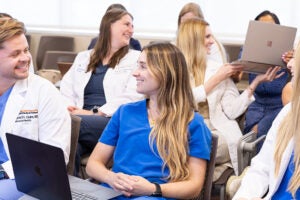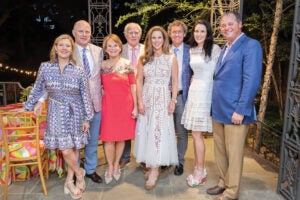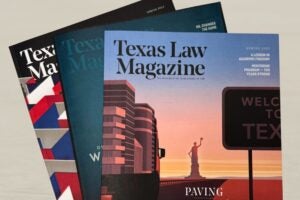An international partnership of 54 countries led by the United Kingdom’s Royal Botanic Gardens, Kew is celebrating a decade of work to set aside seeds for future generations from 10 percent of the world’s wild flowering species.
Thousands of seeds from nearly 25,000 native plant species have been collected and frozen down at locations that include Kew and the Lady Bird Johnson Wildflower Center at The University of Texas at Austin as part of the $108 million Millennium Seed Bank (MSB) Project–the largest seed bank dedicated to wild plant species in the world. In Texas, the 590 species whose seeds have been preserved so far include everything from the Texas bluebonnet to angels’ trumpets to wild buckwheat.
“Texas contains nearly a quarter of all native flora in North America, and it has been a tremendous honor to help save the genetic legacy of the state’s iconic native plants as participants in the Millennium Seed Bank Project,” said Susan Rieff, director of the Wildflower Center. “We are especially proud of our dedicated staff members who have stockpiled seeds for the Project from hundreds of plant species that may face future threats to survival.”
Kew’s major MSB partners are present in Australia, Chile, China, Kenya, Mexico and elsewhere. In the United States, where the project is also called the Seeds of Success program, the Lady Bird Johnson Wildflower Center, the Bureau of Land Management and four U.S. non-profits have collected seeds.
Other seed banking projects have focused primarily on plants that are agricultural crops. Yet plants do more than serve as the food base for the planet. They also provide medicine, building material and fuel, and are essential for regulating the climate, purifying our water and air and offering other benefits. An estimated one-third of known plants worldwide are under threat due to habitat destruction, exploitation and invasive plant species that compete for resources.
“In a time of increasing concern about loss of biodiversity and climate change, Kew’s MSB partnership provides a real message of hope and is a vital resource in an uncertain world”, said Professor Stephen Hopper, director of the Royal Botanic Gardens, Kew. “The need for the kind of insurance policy and practical conservation resource the Millennium Seed Bank provides has never been greater.”
In Texas, home of the first plant to be listed on the Endangered Species List, 23 other plants species are endangered, and five more are considered threatened. Meanwhile, more than 200 of the state’s roughly 6,000 plant species are listed as “species of concern” with too little known about them because of resource constraints to make informed decisions about their conservation.
“As an MSB partner, we have collected and banked 10,000 or more seeds from species that form the backbone of landscapes that make Texas what it is,” said Flo Oxley, the center’s director of plant conservation and education. “These seeds can be used to preserve native species whose usefulness we may not even know yet, for plant research and other conservation purposes.”
For example, seeds from some of the nine Ash tree species in Texas are being preserved as part of MSB that could become useful if the state gets hit with emerald ash borer, an exotic beetle discovered in Michigan in 2002. The beetle has killed millions of ash trees in Michigan and 12 other states. Even native insects could become a threat, as has been the case with pine beetles in the Rocky Mountains and elsewhere that have decimated western conifer forests, likely the result of recent warm winters and drought that weakened trees.
The Wildflower Center’s Michael Eason and Minnette Marr have crisscrossed the state since 2002, climbing rocky cliffs in the Davis Mountains of West Texas, searching for plants in the El Paso desert, wading through East Texas bogs and facing other challenges to capture plants with fruit containing seeds ready for picking. They have been assisted by 100-plus volunteers and botany colleagues across Texas who helped collect the seeds and prepare them to freeze down at minus 4 degrees Fahrenheit for 200 years or more. Six hundred collections have been made during the first phase of the MSB project in Texas, with roughly half the 6 million seeds preserved at Kew, and the remainder shared between the Wildflower Center and the National Center for Genetic Resources Preservation in Fort Collins, Colo.
Kew and its partners are seeking funding for the next phase of the MSB partnership. It will focus on conserving an added 15 percent of the world’s plant species by 2020. The second phase will also involve sharing collected seeds to restore plant populations and to research drought-resistant crops and other sustainable uses of plants. Some of these applications are already under way.
Editor’s Note: To interview Wildflower Center staff or receive high-resolution images of Texas or international MSB collections, contact Barbra Rodriguez at 512-232-0105 or brodriguez@wildflower.org. A video of a Texas seed collection trip is online.
To learn more about the international MSB Project, go to www.kew.org/msbp, call: +44 (0)20 8332 5607 or contact: a.quenby@kew.org or b.friedlander@kew.org.
In addition to funding from the United Kingdom’s Royal Botanic Gardens, Kew, the Lady Bird Johnson Wildflower Center received grants from the Houston Endowment, Abell-Hanger, and Shield Ayres in support of its MSB collections. The seed collection efforts have also been helped by staff at places that include Sul Ross State University, Mercer Arboretum and Botanic Gardens and the Chihuahuan Desert Research Institute, as well as by private land owners, federal agencies and non-profits such as The Nature Conservancy.



